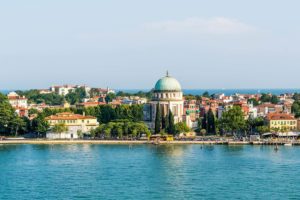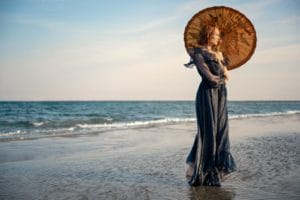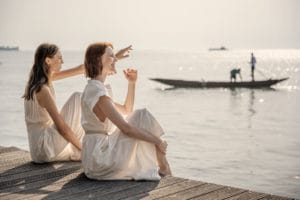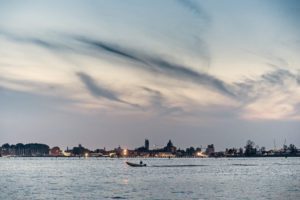Three small islands different from each other but linked by a common history.
San Lazzaro degli Armeni, with its incredible library and museum that preserves artefacts from all over the world, is a cradle of the culture of the Armenian people that has inhabited it since the eighteenth century. And then the Lazzaretto Vecchio, chosen for its isolation as the first hospital in the world for plague patients. And finally Poveglia, the land – perhaps – of ghosts.
THE MAIN THEME
In the lagoon of Venice, opposite the Lido, there are three small islands linked by a common history, that of the Republic of Venice and the plague period: their isolation from the city made them, at different points in time, leper colonies and quarantine sites for ships entering Venice, acting as genuine bulwarks in the protection of the city from the epidemics arriving by sea. At the same time, they are three very different places, each with its own peculiarities that are worth discovering.
THE DIVERSITY THAT MAKES THEM UNIQUE
After a period spent as a leper colony, San Lazzaro degli Armeni has become one of the world’s most important centres of Armenian culture. It was granted by the Serenissima to Armenian monks in 1717, who made it flourish once again by restoring the Church, creating a typography over the years, and above all a library, which today preserves ancient finds from all over the world and more than 170,000 volumes. Today, it is the monks who guide the tourist visits.
Lazzaretto Vecchio is the smallest of the three islands (it covers only 2 hectares) and in 1423 it became, at the behest of the Republic of Venice, the first hospital in the world for those suffering from plague and leprosy.
Finally, Poveglia. Today uninhabited, it has become famous in recent years thanks to legends that state that, on the island, you can hear the moans of the ghosts of plague victims and the patients of a former psychiatric hospital. Today, it is not possible to reach it by regular means and its fate, to be determined by the State Property Office, is still uncertain.
“At rising and waning, the sun lies at once in the sea and on the earth.”













